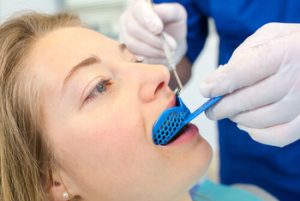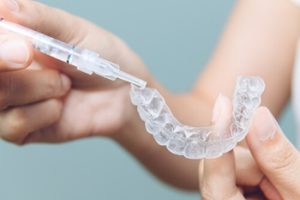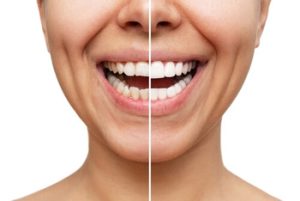When you’re wearing braces, maintaining a bright, white smile can be a bit trickier than usual. Whether you’ve chosen traditional metal braces, ceramic braces, or lingual braces, the brackets and wires can make it difficult to whiten teeth evenly. But don’t worry; there are safe and effective ways to keep your teeth looking their best throughout your orthodontic treatment.
In this blog, we’ll explore how to whiten teeth with braces safely, the best products and methods available, and how to avoid common pitfalls like tooth sensitivity or uneven whitening. Whether you’re using removable braces or fixed ones, your journey to a significantly brighter smile can still continue.
Why Teeth May Stain During Orthodontic Treatment
When you begin orthodontic treatment, you’re investing in a straighter, healthier smile. But as your teeth gradually shift into alignment, you might notice something unexpected: tooth stains. It’s more common than you think, especially for patients wearing braces.
Here’s why teeth with braces may become stained during your treatment:
 1. Trapped Food and Plaque
1. Trapped Food and Plaque
Brackets and wires from traditional braces or lingual braces create lots of tiny nooks and crannies. Food debris, plaque, and bacteria can easily build up around these areas. If not cleaned properly, this buildup can lead to surface stains, discolouration, and even tooth decay.
2. Poor Oral Hygiene
With braces, brushing and flossing take more time and effort. If you’re not thorough, plaque and whitening-resistant stains can develop around the brackets, leaving a ring of discolouration once the braces are removed.
3. Diet Choices
Foods and drinks that are dark, sticky, or acidic can stain or weaken your tooth enamel. Common culprits include:
- Coffee and tea
- Red wine
- Tomato-based sauces
- Cola and sports drinks
- Berries and soy sauce
These can cause tooth stains that become more noticeable when you’re wearing braces.
4. Demineralisation
In some cases, poor cleaning habits can lead to a condition called demineralisation. This results in white or chalky spots on your teeth caused by the loss of essential minerals in the enamel. It’s one of the most difficult forms of tooth discolouration to treat, especially once braces come off.
5. Dry Mouth or Reduced Saliva Flow
Some orthodontic patients experience dry mouth. Since saliva naturally helps wash away acids and bacteria, a lack of it can make it easier for stains and decay to develop.
Preventing tooth stains during orthodontic treatment comes down to consistency. Practise good oral hygiene, avoid stain-causing foods, and talk to your dental professional about safe whitening options to keep your smile looking its best during and after treatment.
Can You Whiten Your Teeth with Braces?
The short answer is yes, but how you go about it depends on the type of braces you have and how far you are into your treatment. If you’re using removable braces like clear aligners, whitening is easier, as the trays can be taken out. If you’re wearing traditional metal braces, ceramic braces, or lingual braces, you’ll need to take a more cautious approach.
Let’s Talk Whitening Options for Braces Wearers
Braces can make whitening a bit tricky, but it’s definitely possible. With the right approach, you can keep your smile bright throughout your orthodontic treatment. Let’s explore safe and effective ways to whiten your teeth while wearing braces.
1. Whitening Toothpaste: A Simple Start
One of the easiest and safest ways to whiten teeth with braces is by using whitening toothpaste. These contain mild whitening agents that help remove surface stains without damaging the gum tissue or brackets.
Look for a formula with low-abrasion and fluoride treatments to protect enamel. Whitening toothpastes may not dramatically whiten your teeth, but they can certainly make a visible difference over time, especially when paired with an electric toothbrush.
2. Whitening Mouthwash: Freshen Up and Brighten
A whitening mouthwash can be a helpful addition to your daily routine. It can reach between the teeth and around the brackets where a toothbrush might miss. Choose a mouthwash that contains hydrogen peroxide or carbamide peroxide, both of which are effective bleaching agents used in many whitening products.
Bonus: They also help fight tooth decay and keep your gum tissue healthy.
3. Whitening Strips: Proceed with Caution
Using whitening strips while wearing braces can be tricky. These strips only touch the exposed areas of your teeth, leaving the areas beneath your brackets untouched. This may result in uneven colour once your braces come off.
If you’re determined to try them, consult your dental professional first to make sure they’re safe for your situation. In general, whitening strips are better suited for orthodontic patients using removable braces.
 4. Professional Teeth Whitening: The Gold Standard
4. Professional Teeth Whitening: The Gold Standard
If you’re seeking fast, visible results, professional teeth whitening, also known as in-office treatment, is an excellent option. Dentists use stronger bleaching agents, such as hydrogen peroxide, sometimes combined with a special ultraviolet light to enhance the effect.
However, this is usually done after orthodontic treatments are complete to ensure optimal whitening results across all tooth surfaces.
5. Whitening Gels and Bleaching Trays: A Custom Approach
Whitening gels and bleaching trays can be customised by your dentist for use after braces or with removable braces. These often contain carbamide peroxide, a strong bleaching agent that breaks down into hydrogen peroxide to effectively lift stains from enamel.
While you may find over-the-counter whitening trays, it’s best to have a dental professional create a tray specifically fitted to your teeth, especially if you have sensitive teeth or sensitive gums.
Whitening with Lingual Braces or Removable Aligners
If you’re using lingual braces (braces behind the teeth) or aligners like Invisalign, you have more flexibility when it comes to whitening. You can remove aligners and use whitening products more easily, such as:
- Whitening toothpaste
- Bleaching gels used inside the aligners
- Whitening strips or trays (if approved by your dentist)
Because your brackets are hidden behind your teeth, the aesthetic concern of uneven whitening isn’t as prominent.
Avoid These Whitening Mistakes While Wearing Braces
To protect your dental health and get the best whitening results, avoid these common mistakes:
- DIY whitening treatments with lemon juice or baking soda. These are too acidic and can damage enamel.
- Overusing whitening products, especially those with harsh abrasives or high peroxide concentrations, may lead to tooth sensitivity or gum irritation.
- Whitening only the visible teeth leaves an uneven colour when the braces are removed.
- Ignoring professional advice. Always consult with your dentist before starting a whitening treatment.
What About After the Braces Come Off?
Once your braces are removed, it’s the perfect time to explore more intensive teeth whitening treatments. Your dentist might recommend an in-office bleaching session or provide you with bleaching trays to use at home.
This is when you can really enjoy the full benefit of whitening methods since the entire tooth surface is now exposed. It’s also easier to monitor the impact of whitening solutions and adjust based on your level of tooth sensitivity or desired results.
Keep Your Teeth White During Braces: Helpful Daily Habits
To help prevent tooth discolouration and maintain whiter teeth while wearing braces, follow these simple yet powerful daily habits:
- Brush thoroughly twice a day with whitening toothpaste and an electric toothbrush.
- Floss daily using orthodontic flossers or water flossers to get between brackets.
- Rinse with whitening mouthwash to reach tough spots and brighten your smile.
- Avoid foods and drinks that stain teeth, such as coffee, red wine, dark berries, and soft drinks.
- Cut back on acidic foods that can weaken enamel and make it easier for stains to stick.
- Visit your dentist regularly for professional teeth cleaning and advice on whitening teeth.
Are Whitening Treatments Safe for Orthodontic Patients?
Most whitening options are safe when used correctly and under professional guidance. However, orthodontic patients should be cautious about overusing products containing bleaching agents, as this can increase tooth sensitivity and affect surrounding gum tissue.
Always prioritise the health of your teeth and gums before seeking cosmetic enhancements. A healthy smile is the foundation for a beautiful one.
Final Thoughts: You Don’t Have to Wait for Brighter Teeth
 Having teeth with braces doesn’t mean you can’t enjoy a bright, confident smile. Whether you choose whitening toothpaste, mouthwash, or wait until your braces come off for professional whitening, there are plenty of safe and effective ways to whiten your teeth during treatment.
Having teeth with braces doesn’t mean you can’t enjoy a bright, confident smile. Whether you choose whitening toothpaste, mouthwash, or wait until your braces come off for professional whitening, there are plenty of safe and effective ways to whiten your teeth during treatment.
Focus on good oral hygiene, choose your whitening method carefully, and work closely with your dental professional to avoid any damage or uneven results. That way, once your orthodontic treatment is complete, you’ll reveal not just a straighter smile but a significantly brighter smile, too.
Contact Beyond Infinity Dental at (02) 8806 3799 and book a consultation to discuss safe and effective whitening options tailored to your smile.
References
- Colgate. (n.d.). Teeth whitening toothpaste: Does it work? Colgate. Retrieved from https://www.colgate.com/en-us/oral-health/selecting-dental-products/teeth-whitening-toothpaste-does-it-work
- Cherney, K. (n.d.). Six natural ways to whiten teeth. Medical News Today. Retrieved from https://www.medicalnewstoday.com/articles/322421
- NHS. (n.d.). Teeth whitening. National Health Service (UK). Retrieved from https://www.nhs.uk/conditions/teeth-whitening/
- Seladi-Schulman, J. (n.d.). Lingual braces: Cost, pros and cons, and comparison with Invisalign. Healthline. Retrieved from https://www.healthline.com/health/lingual-braces-2









